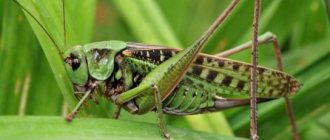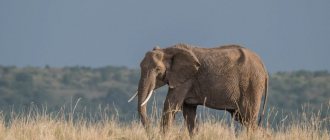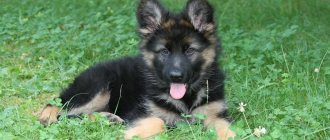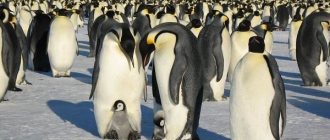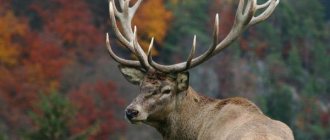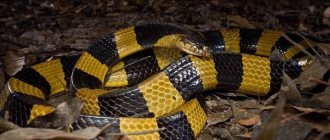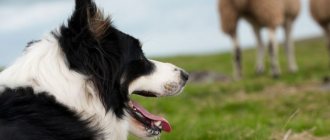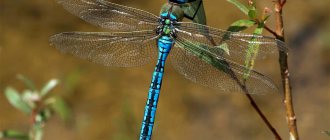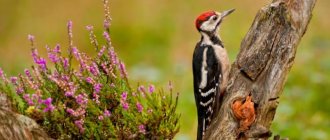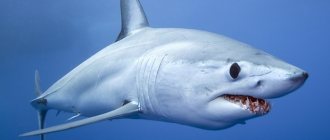Beetles, like other insects, can be harmful or beneficial. The first ones strive to reduce our harvest, destroy flowers and harm trees. The latter are trying their best to help us and exterminate dangerous relatives.
We have written about insect pests more than once. Now it’s the turn to recognize our defenders by sight.
- All garden pests in tables with descriptions, photos and control measures
We have compiled a “dossier” for you on each pest - save this collection!
- All garden pests - photos, names, descriptions and control measures
We have collected for you dossiers on 60 or more garden “villains”.
Ground beetles
These creatures belong to the suborder of carnivorous Coleoptera and for the most part form a large family, in which scientists number about 25 thousand species alone, although there is an assumption that twice as many of them live on Earth. Moreover, about three thousand varieties are found in Russia.
These are very large beetles, the size of which reaches 6 cm, but for the most part is about 3 cm. They are mostly dark in color, often with a metallic, sometimes rainbow tint. However, the colors of the species are varied, as is the shape of their bodies. Most of the varieties have underdeveloped wings, and therefore almost do not fly, but they develop considerable speeds when running.
Most often they are predators, and therefore feed on worms, butterflies, snails, slugs and only a little plant food. Ground beetles go hunting at night and become especially active on cloudy days in the warm months. Their main habitat is the upper layers of soil; in rare cases they can be seen on trees and other plants.
Golden ground beetles, which live in Europe and central Asia, are considered the most voracious. They love to feast on gypsy moths, and by eating this pest of cultivated plants, they bring undoubted benefits. The purple ground beetle is also famous for its good appetite, which is very useful.
The main color of such beetles is dark, but with a purple border, which is why the species received its name. But the grain ground beetle loves to thoroughly gnaw the germinating grains of grain crops. This causes terrible damage to the crop, and for this reason it is considered a pest.
Genus classification
There are more than 600 species of dung beetles in the family Geotrupidae. It should be borne in mind that there are several subfamilies, such as:
- Subfamily Bolboceratidae, which includes both large and medium-sized beetles. Most species of this subfamily live in the Palearctic. Beetles of this genus grow to 15–23 mm in length, their palps consist of 11 segments, and their tentacles consist of 3 segments. These beetles are distinguished by black, brown or two-colored elytra. The wings are well developed, so the beetles fly from one place to another without any problems. Adult beetles most readily feed on mushrooms, and larvae feed on humus.
- The subfamily Geotrupinae are beetles that reach medium size and are distinguished by prominent upper jaws and lips. The club may be lamellar or abaxial. The forelimbs have 4 to 9 teeth located along the outer edge. Beetles of this subfamily feed on the feces of mammals. In addition, their diet includes mushrooms and forest litter.
- The subfamily Lethrinae has a convex, oval body, up to 35 mm long. They can be distinguished from representatives of other families by the presence of mandibular processes located on the upper jaw in males. The mace is surrounded and therefore cannot spread. Representatives of this subfamily do not fly and prefer to live in burrows. During breeding, males are aggressive towards each other. The male and female copulate on the surface. To provide food for their larvae, beetles collect various organic substances.
Twirly
This family of small-sized water beetles (on average about 6 mm) includes several hundred species, mostly inhabiting tropical waters, but such beetles are also found in the northern regions, in particular in fresh water bodies near the Black Sea coast, in Sweden, Norway, Spain. And a couple of dozen species live in Russia.
Such beetles, like the previous ones, belong to the suborder of carnivores and feed on small aquatic life, not only alive, but also dead. Their way of digesting food is very interesting, because the main processes occur not inside, but outside their body. The spinners inject enzymes into their prey, which dissolves it, and then only suck it up.
The body shape of such creatures is oval, convex; The color is predominantly black and shiny. On the surface of the water they move energetically, quickly, stay in groups, constantly describing circles and dancing in circles without rest, for which the beetles got their name. And only sensing a threat, they dive into the water.
In addition, they can fly, as they are naturally endowed with membranous, well-developed wings. For their tirelessness, these waterfowl insects have been awarded the title of the fastest swimmers among their own kind. The largest species of such organisms are found in East Asia; their representatives can grow to a size of two or more centimeters.
ladybugs
What types of beetles are most recognizable in Russia ? Ladybugs have been familiar to us since childhood and are common not only here, but throughout the world. In total, about 4 thousand species of these creatures are known, which are united in the family of ladybugs. Their habitat is a variety of plant types. Some species spend their lives on trees and shrubs, others on field and meadow grasses.
Being members of a suborder of carnivorous beetles, these useful creatures, measuring approximately 5 mm in size, are known as aphid killers. They protect themselves from their enemies by spraying a yellow, unpleasant-smelling, poisonous liquid, a kind of milk. It is believed that it was for this feature that these insects were called ladybugs.
Their colors are always bright. The elytra usually have rich red or yellow colors, but sometimes brown, blue, black, and are also decorated with dots, the number and shade of which can vary. Representatives of this family also belong to the species of flying beetles .
How to fly here
Those who have solved their internal problems and compacted all the necessary organs are faced with the next task - how to take off with this. And not just take to the air, but also fly to the goal. “In order to be able to actively move, they need to overcome the speed of the wind,” says Sergei Farisenkov, junior researcher at the Department of Entomology at Moscow State University and lead author of the article in Nature
.
“In the forest near the ground, the wind is not the same as above the treetops, but its speed is still significant for such miniature animals.” It is not easy for small and light ones to break through the wind. For most insects, the rule is true: the smaller you are, the slower you fly. But entomologists from Moscow State University noticed that some miniature beetles from the family Ptiliidae systematically
violate this rule. Not only do they fly faster than their similarly sized relatives, they also accelerate faster than death-eating beetles, which are 60 times longer.
In small rove beetles and sylphids (dead-eaters), speed (A) and acceleration (C) depend on body length (red). In ptyliid featherwings (blue), both speed and acceleration also depend on body length, but are often greater than expected for their size
Sergey E. Farisenkov et al. / Proceedings of the National Academy of Sciences
Share
To find out how they manage to do this, scientists undertook to describe in detail the flight of winged wings. And they discovered that it was unlike the flight of any other living creature.
Other miniature insects, Farisenkov explains, make two wing beats per cycle: down and up. At the same time, their wings collapse at the top and diverge at the bottom, and the final trajectory of the flapping turns out to be U-shaped.
Left: The U-shaped path that the wings of a carnivore describe. Right: The wide figure eight of the wings of Paratuposa placentis
Yu Zhu Lyu et al. / Physical Review E, 2022 // Sergey E. Farisenkov et al. / Nature, 2022
Share
With winged wings everything is different. Their wings describe a figure eight: first flap down and forward, then return the wings to the ready position and flap again, this time down and back - and return again, from there the cycle repeats. Each cycle consists of two downward strokes and two upward strokes, during which the wings collapse.
Flight of Paratuposa placentis
Sergey E. Farisenkov et al. / Nature, 2022
Share
But every movement of the wings, Farisenkov continues, generates a large torque. Because of it, the beetle begins to “sway in pitch” back and forth, as if it is trying to somersault over its head. Here the elytra come to the rescue - the front modified pair of wings - which in ptilids work as a stabilizer. The beetle flaps its elytra to compensate for the moment of rotation - and, according to scientists, reduces it by half. The feather wing still sways - but if it weren’t for the elytra, it would not fly anywhere at all.
Such a sophisticated flight mechanism is due to the fact that during miniaturization, these beetles also saved on wings. In large insects, the wings are membranes of cuticle stretched over a skeleton of veins, while in microscopic beetles the wings are feathery (hence the name of the family). More like a flat panicle, such a wing weighs only 24 nanograms - which is 5-8 times less than a membranozone wing of the same size would weigh. The feathery wing has an order of magnitude lower moment of inertia, so its kinetic energy is entirely transferred into the air. The movement of the wings is more reminiscent of the flapping of the limbs, due to which many crustaceans move in water - feather wings paddle through the air rather than fly.
(b) Feather wing of Paratuposa placentis
(c) Fragment of a wing seta
of Paratuposa placentis
Sergey E. Farisenkov et al. / Nature, 2022
Share
All this allows microbeetles to remain stable in the wind and accelerate up to tens of centimeters per second. “Hundreds of body lengths per second,” Farisenkov recounts, “this is impressive.” A Formula 1 car on a straight line flies about 16-18 of its body lengths per second, a cheetah runs about 20. A winged wing is an order of magnitude faster.
Swimming beetle
This is an underwater predatory coleopteran that inhabits standing deep waters with abundant vegetation. In this environment, such carnivorous creatures always have a huge supply of food, that is, a variety of living creatures. Sometimes these creatures even choose small fish and newts as their victims.
By the way, having caught them, they are able to absorb them with amazing gluttony and speed. The larvae of such beetles are also very dangerous. They launch predatory mandibles into their victims, through the channels of which digestive juice passes, and back they suck in food that is already suitable for consumption in a digested state.
Numerous species of such beetles are grouped into the diving beetles family. One of its representatives has a flat, oval, dark green body on top, bordered by yellowness at the edges, which is why the species is called “bordered swimmer.” Its hind pair of legs is covered with hairs and has a paddle-like shape.
And the body itself is similar in structure to a submarine: it is rounded, smooth and flat. Thus, nature itself made sure that these creatures, no more than 5 cm long, felt at ease in the water element, moving there energetically and agilely. But such insects are also capable of moving on land. They usually reach areas near bodies of water by air, using their wings.
How the dung beetle lives: interesting facts from life
- It is believed that the dung beetle can navigate by the stars and the sun. When they carry a load, they usually move backward, pushing a rolled ball of dung with their hind legs. This way they never lose direction. To find their way to their burrow, they often climb to high ground. If they have to move in the dark, they navigate by the moon and stars. When it's cloudy outside, they spend a little more time getting to their home.
- The sacred scarab is a type of dung beetle. Already in Ancient Egypt, a shiny black beetle was seen rolling dung balls. The Egyptians believed that the beetle reflected the movements of the sun in the sky.
- Dung beetles are quite interesting creatures because they have learned to get moisture from fog. To do this, they open their wings, after which they release drops of life-giving moisture.
There is only one conclusion - these beetles are anything but useful.
Colorado beetle
It just so happens that carnivorous types of beetles are for the most part considered beneficial because they eat small pests from among their insect relatives. And the more insatiable the predator, the more benefit it brings. Of course, we judge from the point of view of us, people.
But humanity has disliked vegetarian beetles, for example, members of the leaf beetle family, especially a representative of one of its species - the Colorado potato beetle . The fact is that adult individuals of these insects, along with the larvae, eat the leaves of eggplants, tomatoes, peppers with insatiable gluttony, but are especially fond of potato beds.
These terrible pests, no more than a centimeter in size, have turned into cruel invaders of our territories quite recently. Apparently, they were brought to Russia by chance. These foreigners come from the New World, more precisely from Mexico, where they initially ate tobacco and wild nightshade leaves.
Later, having adapted to feast on the potato plantings of the colonists, they gradually began to spread north to the United States, in particular they really liked it in Colorado. That's why beetles are called that way. The head and chest of such insects are orange with dark markings. The body is shiny, elongated, oval.
The elytra are decorated with black longitudinal stripes. Having recognized this terrible beetle by its signs, gardeners should immediately take action and vigorously fight the terrible aggressor. After all, Colorado potato beetles reproduce quickly.
And they are so voracious that they almost completely eat potato bushes, and not just the leaves. And having destroyed everything, they spread their wings and travel safely in search of new places rich in food, conquering more and more new areas.
Ecological significance
The dung beetle is used on dairy farms and cattle ranches to solve the problem of animal manure disposal.
When insects use manure to raise their young, they minimize the number of places where insects and bacteria harmful to humans and animals can thrive.
This is especially true for flies, which do not shy away from even one pile of manure and can fly into the house and land on food. In turn, they provide the soil with organic matter, which improves its fertility.
False potato beetle
The immigrants from Colorado described above are an independent species in their family that has no varieties. But in nature there are beetles very similar to them, practically twin brothers, with the only difference that they do not cause much harm to potatoes and other garden plants.
They also feed on nightshades, but not cultivated ones, but weeds. But they are called potato beetles, only falsely. It’s just that they are really very similar to the terrible American pests we know, as well as their larvae. Only the colors of their clothes are not so bright, but noticeably more faded. The elytra are almost white, but are marked with the same longitudinal stripes.
Nutrition and lifestyle
Elephant beetles appear between September and December. They fly well and are able to travel long distances in search of food, although they prefer to move on the ground and tree trunks. The main activity is at dusk and at night, although sometimes beetles eating food can be seen during the day. But still, more often in the daytime they rest, hiding among the branches and leaves of trees.
Insects feed on the sap of leguminous and rutaceous trees, for which they gnaw the bark with their jaws and drink the secreted sap. They also enjoy eating ripe pineapples, bananas and other tropical fruits. In captivity, an animal can eat one avocado or other fruit of a similar size per day. Interestingly, in the event of a cold snap, beetles can maintain their own body temperature at the desired level, like warm-blooded animals.
Wood boring beetles
Another type of vegetarian beetle has turned into a terrible enemy of humanity. And it is not surprising, because they are not only destroyers of garden trees, but also terrible destroyers of wooden buildings and furniture, because they feed on wood.
Let's list the most famous types of wood-boring beetles , and also tell you in more detail about their unseemly activities. Here they are:
1. The house longhorned beetle, a representative of the longhorned beetle family, which also received the nickname of the house woodcutter, is a so-called technical pest because it rarely harms living trees, but only those that have been cut down and cut down. It is found only in dry, dead wood, mostly coniferous trees. Adult beetles are usually about 7 mm or more in size. They have an oblong body, rounded at the back, most often dark brown in color, covered below with erect, light hairs.
In the course of their life, such wood lovers lay winding labyrinths in it, where they leave their elongated, whitish eggs. Those wooden objects where such beetles settle, after some time become covered with a coating similar to flour, then become unusable and are destroyed;
2. Hooded beetles are also a whole family of tree pests. Its representatives are bugs, about one and a half centimeters in size. In Europe, the most common variety has a black front and red back.
In Arabia and Africa, another one became especially famous: brown in color with protruding pectoral processes, similar to horns. The entire family includes about 7 hundred species. Most of them live in the tropics;
3. Representatives of the family of drillers are famous for the width of the moves they make, for which they received their nickname. The most attractive wood species for them are walnut and oak. Interestingly, such beetles feed not on the wood itself, but on fungal mold, for the growth of which favorable conditions are created due to the penetration of moisture into the damage. Most often, beetles are reddish in color. They have very elongated, thin bodies, averaging about 1 cm in length;
4. Grinders are another family of wood pests. For the most part, these are reddish-brown bugs, no more than a centimeter in size, with a comb-shaped antennae. They feed on both dead and living wood, and are sometimes found in food and medicine. In the process of life, they emit very strange sounds, similar to the ticking of a clock, by which one can recognize the settlement of unpleasant guests;
5. Bark beetles are a subfamily of the weevil family. There species of bark beetles around the world, and more than a hundred in Europe. These are small dark brown creatures, the largest of them reach 8 mm in size, but there are also very small ones, only a millimeter in size.
They are capable of infecting living trees, even the stems of some grasses, penetrating deeply into their tissues. If they start in dead wood, then not in dry wood, but in wet wood. Some varieties spread fungal mold spores, which subsequently serve as food for their larvae.
Such organisms live in the tropics, as well as in areas with temperate climates, including Europe. Often hordes of beetles become a real natural disaster, destroying literally everything wooden in their path.
Human interaction
Many beetles cause damage to agriculture. Larvae of beetles and wireworms develop in the soil for several years, eating the roots and underground trunks of cultivated plants. The upper part of the trunk is gnawed by beetles such as longhorned beetles, borers, bark beetles and borers. The leaves of plants suffer from the invasion of weevils, leaf beetles and tubeworms. Some beetles prevent pollination and fruit formation of many crops by eating their flowers and pollen. These pests include pollen eaters, weevils and some weevils.
Insects such as flat beetles, leather beetles, grinders and pretenders settle in private houses and utility rooms. There they destroy food supplies and raw materials. Also dangerous to agriculture are poisonous beetles, which, along with feed, enter the digestive tract of livestock and lead to serious poisoning.
Beneficial Bugs
Many beetles bring significant benefits by exterminating insects - massive pests of fields and vegetable gardens (predatory species), performing a sanitary function - destroying droppings and carcasses of animals in nature (dung beetles and carrion beetles).
There are quite a lot of predatory Coleoptera in both suborders. They belong to different families. Of the carnivores, ground beetles should be noted, many of which are common in gardens and forests, where they hunt for various insects. The most common of them are the garden ground beetle (Carabus hortensis) and the forest ground beetle (C. granulatus). Undoubtedly, beautiful ground beetles (Calosoma), which are close to real ground beetles, are very useful. Beautybirds are large coleopterans, especially useful because they stay in trees, where they destroy hairy pine silkworm caterpillars and others that most birds avoid. Caterpillars are hunted not only by beetles, but also by their larvae.
Another group of coleopterans, of course, useful predators from the suborder heterovorous, are ladybugs, a typical representative of which is our seven-spotted ladybird (Coccinella septempunctata). There are a lot of species of ladybugs (up to 2000), and most of them are predators not only in the imaginal stage, but also in the larval stage.
Ladybugs and their larvae feed mainly on aphids and mealybugs, destroying them in huge numbers. Thus, according to G.D. Lavrov, the seven-spotted ladybug destroys up to 80 apple aphids per day, which is 50.7% of its mass. Only a very few herbivorous ladybugs can harm plants. Ladybugs and their larvae are brightly colored and have a warning coloration. They are inedible and, when irritated, release a drop of poisonous hemolymph from the joints of the limbs.
The droppings of various animals attract many dung beetles from the family Lamelidae and serve as nutritional material for them and their larvae. Various Coleoptera also flock to cow, horse, and sheep droppings, using their well-developed sense of smell. Some dung beetles lay eggs directly in manure, which they feed on for themselves and their rapidly growing larvae. Before pupation, the larvae burrow into the ground and pupate there. These are the numerous species of Aphodia dung beetles. These small bugs (5-8 mm) can always be found in animal droppings. Larger dung beetles - geotrusses, attracted by manure, behave differently. Under a pile of droppings, they dig quite deep holes, lay one egg in them and fill the holes with manure, which their larvae then feed on.
Southern dung beetles - scarabs - are very interesting. They make balls out of dung, which they then roll over quite long distances. Then the scarabs dig a hole into which they drive these balls. Some balls are used as food for the beetle itself, while in others the beetles lay eggs and larvae develop in them.
Dung beetles have very strong forelimbs with wide tibiae, serrated along the edges and adapted for digging. In this regard, the tarsus of the forelimb is poorly developed, and in scarabs it is completely reduced.
Predatory beetles
They number more than 45,000 subspecies. The elytra of predatory beetles are short, the body size, as a rule, does not exceed 9 mm. The outer covers of such insects are dark or red-brown. Depending on the subspecies, predatory beetles may have a red or yellow pattern on the surface of the body. Such species arouse the child's interest.
They are distributed throughout the world, more often found in Japan, Canada, Europe, and North America. These beetles feed on the remains of animals and the larvae of other insects. They eat decaying plant pollen and algae found on land.
The most common predatory beetle is the rove beetle. The maximum size of its body is 1 cm, it is elongated in shape. Representatives of this species are found in America and Eurasia. Rove rove beetle lives near water bodies, hiding in wet grass. The insect is found in garden plots. It is not a pest, but protects garden crops from the harmful effects of other arthropods.
Is there any harm
Among Coleoptera there are also garden and vegetable pests. Young pine trees are destroyed by chafer beetles. They live on the territory of the Russian Federation in the western and southern parts. They lay eggs in the ground. They winter three times.
May beetles feed on plant roots. Damaged trees and bushes first turn yellow and then die completely. Khrushchi are pests of grain crops. They eat ripened grains of wheat and rye. The eggs are laid in the ground. The larvae also live in the soil. At this stage, the caterpillars feed on plant roots. It is young individuals who pose the greatest danger. Click beetles are also considered pests. They feed on underground parts of plants.
Leaf beetles are considered the most dangerous. The family includes 50 thousand subspecies. The beetles completely eat up the plants. This leads to the death of bushes and trees. First the plant turns yellow, and then stops growing and developing. It will be impossible to get a harvest.
Leaf beetles reproduce quickly. If you ignore the parasite, there is a high probability of a beetle invasion on the site. Pests include weevils. Representatives are distinguished by the presence of an elongated proboscis. The beetle lays eggs in the flowers of apple, pear, etc. Young individuals completely eat up the ovary after hatching. One clutch contains 200 eggs.
From this video you will learn more about the types and characteristics of Coleoptera: Bark beetles cause harm to forestry. The beetles eat the tree from the inside. The affected plant becomes rotten and falls. Not suitable for further use. There are beetles that lead an aquatic lifestyle. Underwater, insects destroy fish and harm fisheries.
Harmful and beneficial bugs.
There are many pests among beetles. Bark beetles (lat. Scolytinae) infect trees, primarily pine trees. The house beetle (lat. Cerambycidae) destroys rafters and attic floor beams. Colorado potato beetles, beetles and many others cause great damage to agricultural plants. The Colorado potato beetle is very hardy: without water and food, in a state of sleep (according to science, diapause), it can survive for 3 years. Very prolific. The female lays 500-700 eggs, sometimes, fortunately, 130-200. A record holder has been recorded who laid 3382 eggs! Lives on average one year.
May beetles
These coleopterous insects are among the fairly large ones, reaching a length of at least 2 cm, in some cases more than 3 cm. They get their name from the fact that they appear and begin to fly actively at that period of the year when spring nature blooms in lush colors, warmed the gentle light of the May sun.
The beetles have an oval-shaped, red-brown or black-colored body strewn with hairs, in some cases slightly green, sometimes with yellowish elytra.
Such insects, if their numbers are large, can cause considerable harm to cultivated and wild plants by eating their young shoots. Their larvae are very voracious and feed on the roots of trees and shrubs. species of May beetles. And all of them are united in a genus with the same name.
Rhinoceros beetle / Oryctes nasicornis
There is an elephant, and there is also a rhinoceros beetle. It lives in the deciduous forests of Europe, but over time it has developed a taste for other natural landscapes.
It grows up to 4 cm in length, and can be recognized by the characteristic horn on its head. It resembles a rhinoceros horn, hence the species name. They crawl out of shelters at night, and during the day they prefer to hide in the foliage, under the bark of trees.
On the island of Crete, during archaeological excavations, terracotta figurines in the idea of rhinoceros beetles were found. Such figurines date back to 2000–1600 BC.
8
Fireman Beetle
This representative of the soft-bodied family also bears the name “country soft-bodied”. This is because the covers of its body, unlike its relatives in the order, are not hard chitinous, but soft, as well as flexible weak elytra. If it were not for the toxic substances secreted by these creatures, then they would have had a bad time in such clothing, which is so little capable of protecting them from their ever-watchful enemies.
Such beetles have an elongated body, up to 2 cm in size, equipped with segmented thread-like antennae at the front. They have a fire color, that is, a color where dark tones are contrastingly combined with bright shades of scarlet.
These are predators that hunt small prey, killing it with powerful poisonous bites and consuming it. And since these creatures are dangerous carnivores, they become useful to humans. And gardeners are trying to attract such insects to their plots. Firefighters destroy leaf beetles, caterpillars, aphids and other pests.
Killer Cow
We have already mentioned enough species of black beetles . Ground beetles, whirligigs, some longhorned beetles and cockchafers may have this color. And even the firefighter beetle just described has extensive dark areas in its outfit.
But few of us have seen black ladybugs. However, they exist. This is a type of Asian ladybird. It may be black, decorated with red dots; it can also be yellow-orange with numerous blurry spots of black.
Such creatures are usually larger than other cow relatives, measuring about 7 mm. They are given the nickname killer cows because among insects they are fearsome and insatiable predators. We have already noticed that carnivorous beetle species tend to be beneficial.
And here we can assume that the more active the predator, the more positive its activity is for humans. The Americans thought the same thing about a quarter of a century ago. But they made a mistake by bringing the Asian ladybird to their lands, in the hope that it would become a successful destroyer of annoying midges and aphids.
The fact is that such cows, called “harlequins,” in addition to harmful insects, devour their fellow cows, other types of cows, which are very useful and valuable. Moreover, they damage grapes and berries. Now, having realized their mistake, they are fighting them, however, it is useless, because the dangerous species is spreading more and more widely.
European countries have already suffered from it, in particular Belgium, France, and Holland. In winter, Asian women climb into human homes, causing allergies in their owners. But no reliable means of combating killer cows have yet been invented.
How to get rid of it: traditional methods
Larvae are the culprit behind damaged wood, but they live deep below the surface. Getting rid of them is not so easy, and it is better not to delay treatment. To combat larvae, the following methods are chosen:
- Freezing. Under the influence of low winter temperatures (-5-10°C), the larvae die within 2-3 days. If winters in your region are cold, then pests are unlikely to grow in the outer walls of wooden buildings. This is a convenient way to disinfect furniture: take it out into the yard (or onto an unglazed balcony) and leave it for several days.
- Replacement of damaged fragments. Sometimes the easiest way is to replace a damaged section of trim or piece of furniture. The unusable part is burned, and the remaining surfaces are carefully inspected to see if pests have reached there either.
A damaged fragment cannot always be replaced Source wikimedia.org
Hercules beetle
This resident of the New World, in particular the tropical forests of the Caribbean islands, as well as the southern and central part of the American continent, is famous for its remarkable parameters. It was thanks to them that he became the record holder for size among the beetles of the planet. Its maximum size can be up to 17 cm. Just think, only its gigantic wings can boast a span of 22 cm.
In addition, the appearance of the Hercules beetle is very unusual. The front part of the body is black and shiny. The head of males is decorated with a huge, forward-pointing upper horn, equipped with teeth.
There is also a second, smaller one, located lower and extending from the pronotum. The body of the beetle is slightly hairy, but such vegetation is quite sparse and red in color. The elytra come in different shades: olive, yellow, brown, and sometimes gray-blue.
The beetle got its name not only for its outstanding size, it has tremendous strength. But giants are quite harmless to others and humans. For the most part, they feed on dry tree bark, fallen leaves, slightly rotten fruits and other organic matter that has undergone changes, thereby benefiting the ecosystem.
Beetles need horns for fights with their own kind, because in relation to other Hercules they are very militant. They fight for spheres of influence, for a place in the social hierarchy, but most of all because of females. And in a fight for the latter, they are capable of severely injuring and even killing their opponents.
Goliath beetle
Continuing to describe the types of large beetles , it is necessary to mention this African insect. The dimensions of these creatures are somewhat smaller than those of the previous heroes, their length on average is about 10 cm. However, among beetles on a global scale they are on the list of champions in terms of weight, reaching up to 100 g.
The color of such beetles is mostly black, decorated with a complex white pattern; there are brown-gray specimens with a black pattern. These beetles spend most of their lives in the air. They feed on overripe fruits, pollen and tree sap.
This genus of beetles has five species and is closely related to the May beetles. The only and main enemy of such wonderful insects in nature is man. And the biggest danger is the possibility of ending up in an entomologist’s collection.
Alpine longhorned beetle / Rosalia alpina
There is such an original beetle in the world that has spread throughout Europe. Forest beetles in the mountains rise to a height of 1,500 meters above sea level, which is why they received their species name.
Adults grow up to 3.5 cm in length. The body, head, limbs and antennae are covered with an original pattern. You won’t find specimens with the same color.
The barbel is the only representative of the relict genus Rosalia, which lives in the vast expanses of Europe. The number of the species is declining. The main cause of extinction is deforestation.
6
elephant beetle
Another giant, growing in special cases up to 12 cm. The body of such creatures is predominantly dark, but the brown tint of their color is given by the hairs of this color. In males, a large, upward-curved, black horn grows from the head forward. To some it seems similar to an elephant's tusk, which is why the beetle was given this name.
This is a resident of the American tropics, living in the forests of Venezuela and Mexico. Despite their size, such insects fly beautifully. They feed in approximately the same way as their previous giant brothers. By the way, all three giants belong to the lamellar family.
Nut fruit / Curculio nucum
This beetle is also called the nut weevil, and it lives in the Dubrovnik forests of Europe, where hazel grows in the undergrowth.
It stands out in the order Coleoptera with an unusual proboscis. In females it is slightly longer than in males. There are two antennae on the proboscis. The body of the bug itself is black, but covered with yellowish scales. Because of this, its color appears golden.
Eats hazelnuts, hazel, and can feed on acorns. The female lays eggs in soft hazel fruits. In autumn, the larva gnaws through the shell and falls to the ground. There it burrows into the soil and overwinters.
By the way, on our website most-beauty.ru you can also admire the most beautiful weevils in the world.
4
Stag beetle
The appearance of the beetle , which it is time to introduce, is also very unusual, and its size is large. True, this deer insect is already classified as a different family, called “stag beetles”. This name is not accidental, because the most remarkable feature of the stag beetle’s appearance is a pair of huge antlers, very similar to those of a deer.
The size of these beleopterans reaches 9 cm. This does not qualify for a world record, but insects with such parameters can easily lay claim to championship on a European scale. They are found in Europe, Asia, Africa, and inhabit forests, and therefore the cutting down of trees significantly affects the size of their population.
The beetle larvae grow on dead wood, which serves as food for them. But unlike tree pests, they are only interested in rotten stumps, trunks and branches. Therefore, there is no harm from their vital activity.
general characteristics
Name: Beetles or Coleoptera Lat.: Coleoptera
Class: Insects - Insecta
| Habitats: | everywhere except cold regions |
| Dangerous for: | depending on the type |
| Means of destruction: | folk, chemical, prevention |
Beetles are a group of insects with complete metamorphosis. Almost 3 tons of fossil species have been studied, but a large number are unstudied. They are distributed everywhere, in addition to Antarctica, the Arctic and the highest mountains. But the most attractive specimens can be admired in the tropics.
Fireflies
Representatives of this large family are nocturnal beetles. They have an interesting feature because they glow in the dark. And the reason for everything is oxidative reactions in organs located at the bottom of the abdomen of insects and called lanterns, sometimes they are distributed throughout the body.
Internal light reflectors are also involved in the glow. Moreover, this process is controlled by brain nerve impulses. Fireflies are able not only to “turn on” and “turn off”, but also to regulate the brightness of their “light bulbs” at will.
In this way, they mark territory, scare away enemies, call for sexual partners, and communicate their desires and intentions to their relatives. Light signals can be green, red, blue. And their frequency largely depends on individual and species characteristics, as well as environmental parameters.
Otherwise, fireflies are similar in structure to other beetles. They have an oblong, flat, hairy, brown, brown or black body; upper protective and lower delicate wings that enable flight; comb-like antennae composed of segments; large eyes; gnawing type oral formations, atrophied in adult individuals, since they do not feed on anything, unlike the larvae.
But there are exceptions, because the females of some species resemble dark brown worms in appearance, wingless and with six legs. In conclusion, we note that the presented species of beetles ( in the photo you can see what they look like) are only a small part of those existing in nature.
After all, Coleoptera are so widespread and numerous on the planet that even scientists themselves have no idea about the number of their species in nature. One can only assume that not all of them have been discovered and many of them have not yet been described.
General information
Beetles are a large group of organisms living on Earth. Almost 400 thousand species are known, including 3 thousand extinct ones. Some species are presented in museum collections in a single copy, and some can only be learned from reference books and encyclopedias. Coleoptera are distributed throughout the globe, excluding Antarctica and the Arctic.
The insect's body has three main segments: head, thorax, and abdomen. The sizes of adult individuals range from 1 mm to 20 cm. As a rule, males are smaller and more mobile than females, have longer antennae and wide front legs. Males of some species have developed mandibles - outgrowths similar to horns. For example, in stag beetles they are located horizontally and have the same size, but in the rhinoceros beetle they are vertical, the upper horn is much larger than the lower one.
Beetles, like all insects, have a mixed body cavity. Their body is divided into three sections. The upper one contains the dorsal blood vessel. The digestive, excretory and reproductive systems are located in the middle. At the bottom is the ventral nerve cord.
The life cycle consists of four main stages:
- egg;
- larva;
- chrysalis;
- imago (adult).
The beetle has three sense organs:
- Mechanoreceptors - pick up sound waves, vibration, distinguish touches;
- Thermoreceptors - respond to changes in temperature;
- The eyes are the main organ of vision, consisting of omatidiae. Each ommatidia perceives a separate point in the image, so beetles see it as a mosaic consisting of individual points.
The colors of the beetles are different. In some, mainly diurnal species, it is bright: green, orange, blue, red. Such colors are determined by the way of life, and help the beetles to remain unnoticed among plants. The backs of Coleoptera are often decorated with ornaments of contrasting colors, forming beautiful patterns (stripes on the Colorado potato beetle, black spots on the ladybug and fireman beetle). May beetles and scarab beetles have metallic wings. Nocturnal beetles are predominantly dark in color: black, brown, gray.
Based on the type of nutrition, predatory and herbivorous beetles are distinguished. Predators feed on other insects and their larvae, while herbivores feed on leaves, roots, flower seeds and pollen.
Beetles have three types of communication, allowing individuals of the same species to communicate with each other. These include:
- Sounds. Representatives of 20 families have the ability for sound communication. Most often, sound is used as a scaring signal. The barbel produces sound by rubbing the chest segments. Furniture grinders hit their heads against the wall of a passage in the wood, making sounds similar to the ticking of a clock.
- Glow. Characteristic of fireflies. The common firefly emits a calling signal of an even yellow color, and South American fireflies are capable of emitting green and red colors.
- Pheromones. Necessary primarily for intersexual communication. In most species, pheromones are released by females.
The use of means of communication allows beetles to unite into clusters - groups necessary for wintering and feeding.
Stages of development
The intermediate stage of development between the egg and the adult is the larva. This is a unique developmental stage found only in insects. The larva emerges from an egg laid by the female. Its development lasts from several weeks to several years. The mature larva moves to the next stage - pupation.
In the structure of different types of larvae, common features can be identified:
- large head with gnawing mouthparts;
- elongated fleshy body;
- limbs are absent or poorly developed.
There are 3 main types of larvae:
- Campodeoid. They have a narrow long body, partially covered with dense chitinous plates, long antennae and 3 pairs of thoracic limbs.
- Eruciform. Their bodies are short, fleshy, and not protected by a shell. The limbs are short and weak or completely absent, the antennae are barely noticeable.
- Wireworms. They have a long, cylindrical body covered with a chitinous shell. Very mobile, have several pairs of short strong legs.
The color of the larvae depends on their habitat. Those living secretly (in earthen burrows, plant stems, under bark and other protected places) have a light color: milky white, yellowish, pink. Open-living, leaf-dwelling larvae are dark in color: gray, black, green.
The larvae of water beetles are classified into a separate category. In accordance with their lifestyle, they can be predatory or non-predatory. Predatory individuals are large-headed, have powerful, developed jaws, an agile short body and long legs. Non-predatory larvae are inactive; their bodies have special growths - gills, which allow them to remain under water for a long time.
Habitats
Beetles live everywhere, they can settle on land and in water bodies, and inhabit deserts and tropical forests. Only areas covered with an eternal glacier and the highest mountain peaks are unsuitable for them.
Most beetles live in the upper layers of the soil and in various parts of plants. Mycetophagous beetles settle in mushrooms and feed on their home until they completely eat it. Carrion beetles live in the carcasses of dead animals, and dung beetles live in feces.
Most aquatic beetles live in fresh water, but some species can live in brackish water. Thermophilic species are able to live in warm water; they settle in thermal springs. Some species of beetles lead a semi-aquatic lifestyle. They hunt and spend most of their time in water, but they can get onto land and change their habitat by moving to another body of water.
Some beetles live in human homes and outbuildings. Most of them are parasites that spoil stocks of animal and plant origin: grain, hay, vegetables, flour products, leather, wooden furniture. Some species can harm human health. For example, bedbugs that live on the walls of houses, in furniture and under the floors feed on blood, and their bites are very painful. They can bite adults, but they pose a particular danger to children.
